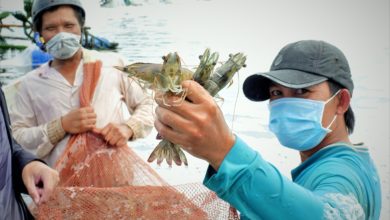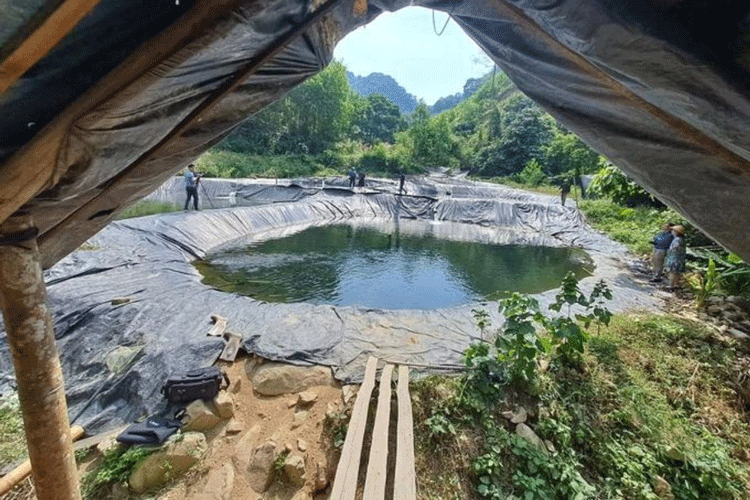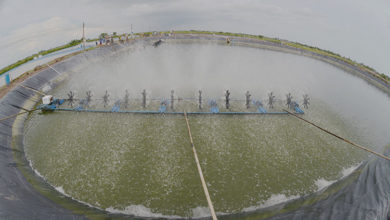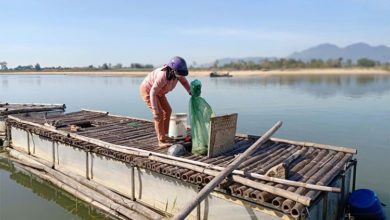Vietnam shrimp sector: Achievements and challenges
Although younger than other countries in the world, but Vietnam shrimp sector has been developed toward modern and sustainable farming methods thanks to the government’s marine economic strategy since 1975. But, the shrimp farmers have not enjoyed high benefits of economic value.
Shrimp revolution during the time war
Early years of 20th century, food requirements was growing due to ocean vulnerability caused by no continuous wars. So, aquaculture activities were started.
In the 1940s, Japanese people closed the life cycle of penaeid shrimp, but could not remove the bottlenecks in animal feed. In the 1960s, when the American scientists focused on shrimp farming and found some nutition solution, making shrimp culture to spread to ASEAN and Taiwan. A breakthrough began in 1940s, when many countries researched and formed shrimp seed companies.
In Vietnam, shrimp aquaculture was born early. Since 1971, the scientists in the North worked on breeding penaeid shrimp, wild white-legged shrimp and after that cooperated with Japanese scientists. In the South, in 1983, Nha Trang Fishery University succeeded in pond-reared P.merguiensis and P.monodon after that. In 1984,Vietnam Institute of Oceanography also succeeded in pond-reared P.merguiensis and P.monodon.
Revolution
Seafood sector has played a key role in economic development. Doi Moi strategy (innovation and open the door) abolished the system of bureaucratic centralized management based on state subsides, and moved to a multi-sector, market-oriented economy. Shrimp culture has been developed and produced satisfactory results. Data from the State showed that early 1986 Vietnam produced 3.3 million post-larvae of penaeid prawns and built large-scale farms as Quy Kim-Bai Chay, Quy Nhon, Vung Tau. .
In 1986, Vietnam has 28 shrimp hatcheries with production capacity of 20 millions PL per year and up to 49 hatcheries and 200 millions PL per year in 1989. In 1991, 120 hatcheries produced 300 millions PL per year; and increasing to 680 hatcheries with production capacity of 2 billions PL per year. Khanh Hoa province is the largest shrimp producer during Doi Moi process with 461 shrimp hatcheries in 1994 and 600 shrimp hatcheries in 1995, producing 1,4 billions PL.
Previously, captured wild seed were used commonly in Vietnam for extensive shrimp ponds. Thanks to State orientation of the Aquaculture industry development strategy for the 1985-2000 and 1990-2005 periods that resulted in establishment of aquaculture zones for export oriented activities until now.
Boost exports in the years of 2000
Previously, seafood in general and shrimp in particular mostly severed the domestic market with low yield. This market trend has steadily changed during 1990s. In 1991, the growth rates of fishing and aquaculture activities were 17.9 percent and 6.8 percent respectively. In 2001, these growth rates decreased to 3.5 percent and 41.9 percent; in which, shrimp sector is the key.
Doi Moi strategy has boosted exports and strengthened aquaculture in Vietnam. Vietnam’s export value in 1998 reached US$90 billions, and increased to over US$ one billions in 2000 with an annual growth rate of 20%. Vietnam’s seafood products were sold in 45 countries.
The key export market during period of 1999-2000 is Japan. In 2000s, Vietnamese enterprises expanded markets for shrimp, thus aquaculture production has been increasing rapidly; export value reached US$2.7 billion, 25.8 fold increase in value compared to 1986. Fish farming area in 2005 just increased by five percent compared to 2000, but shrimp farming area increased by 82.8 percent.
Restore 60 export markets
National data showed that in 2015, Vietnam sold its shrimp products to 92 markets, a rise of 150 ones over 2014. Shrimp enterprises have experienced heavy market losses due to high competition and hard currency devaluation. Vietnam shrimp price has dropped in some main markets. The price of Vietnam tiger shrimp has dropped about 30 percent in the United State.
So, in 2016, Vietnamese shrimp exporters seek to gain markets by reducing cost, improving quality and product diversification. Seafood export revenue of Vietnam first three month has reached US$1.45 billion, a rise of 6.4 percent over the same period. In which, shrimp export revenue reached US$619.2 million, a rise of 8 percent. And the value of Vietnamese shrimp exports is expected to reach US$4 billion. However, Vietnam shrimp sector also will face the risk of climate change, salt intrusion and need to be pushed up by the government during period of 2016-2025.
Nguyen Anh







It’s a pleusare to find someone who can identify the issues so clearly